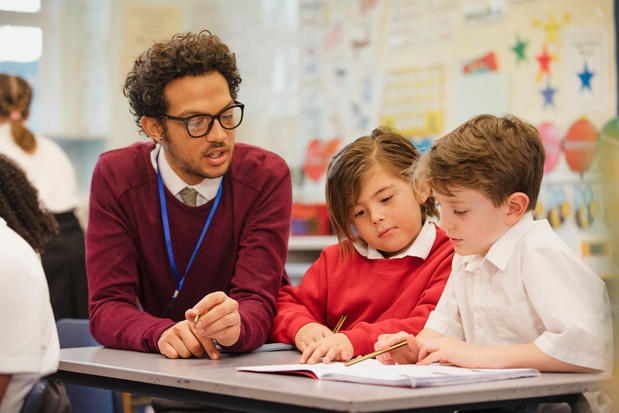Most of the time, I could work out what the word might have been. It was tedious, but I could still follow the story. Until it cut out as they mentioned “the myth of…”
I had no context for what that missing word might be. There were very few clues in what I had heard. I had even caught the initial sound of the word, but given that there are over 4000 words starting with ‘m’ (according to a scrabble dictionary), this was of little use.
I was left frustrated and perplexed. It wasn’t until they later repeated the phrase that I knew they were discussing “the myth of measurement”.
As a fluent reader, I could fill in most of the blanks despite my dodgy Bluetooth connection. However, this is the complicated guessing game that occurs in many classrooms under the guise of reading instruction.
Three cueing is the misguided belief that we need to consider the meaning, syntax, and visual information to decode words. Instead it promotes guessing based on context or using clues provided by pictures.
This style of instruction is evident in the current Australian Curriculum Foundation English elaboration, which has students “attempting to work out unknown words by combining contextual, semantic, grammatical and phonic knowledge”.
Of course, context is important in comprehending the text. However, the first step towards understanding must be accurate decoding.
To create readers who are good decoders students need to be able to orthographically map words, through linking letters with the sounds they represent. To achieve this, we need to explicitly and systematically teach phonics. Decoding occurs when we focus on the letters in front of us and process them in order. If I am looking at anything other than the text on a page to decode, then I am just guessing.
Of course, phonics is only one aspect of reading, but it is an essential skill. Students who can decode words have a much better chance at comprehending the text in front of them.
I recall a student who was reading chapter books. Whenever he got to a word he didn’t recognise, his eyes would jump to the small picture. This child was unfortunately an instructional casualty of three cueing. He had inadvertently been taught that he would understand the word if he looked somewhere other than the word.
This is exactly the type of reading behaviour that leads to a ‘third-grade reading slump’.
Three cueing is often seen as a hallmark of ‘balanced literacy’. Although there is no clear definition of what balanced literacy actually is, it is nevertheless popular term in Australian schools.
It certainly featured prominently in my training as a primary teacher just over a decade ago. One of the texts we were referred to was Fountas & Pinnell’s chapter called ‘Guided Reading Within a Balanced Literacy Program’ (1996).
So imagine my surprise when the same authors posted a blog this week distancing themselves from the term ‘balanced literacy’!
Unfortunately, this shift away from the balanced literacy label doesn’t seem to coincide with any substantive change in their approach to teaching reading.
Recently, social media erupted as a moderator for Fountas & Pinnell’s facebook group suggested that we should accept that 20 per cent students will be unable to read proficiently. I am not sure where this figure came from, and Fountas & Pinnell have since apologised. However, to claim that 1 in 5 was an acceptable rate of failure caused an outburst.
Imagine the outcry if 20 per cent of students didn’t have lunch! This equates to over 800,000 current students in Australia. As educators, we should not accept this high number of instructional casualties.
Many parents shared the stories of their children, who are instructional casualties of three cueing. The devastation, heartbreak and illiteracy that are perpetuated by the prevalence of this practice is shocking!
Think about your family and friends. How many of them are you willing to allow to be instructional casualties? How can we possibly condemn such a large proportion of them to a life of struggling to read?
Three cueing, by its nature, leads students to guess at words. This creates instructional casualties who become poor readers. Our children deserve to be taught the skills they need to decode words accurately.
Teaching phonics systematically and explicitly as part of our literacy instruction empowers every child to read.














